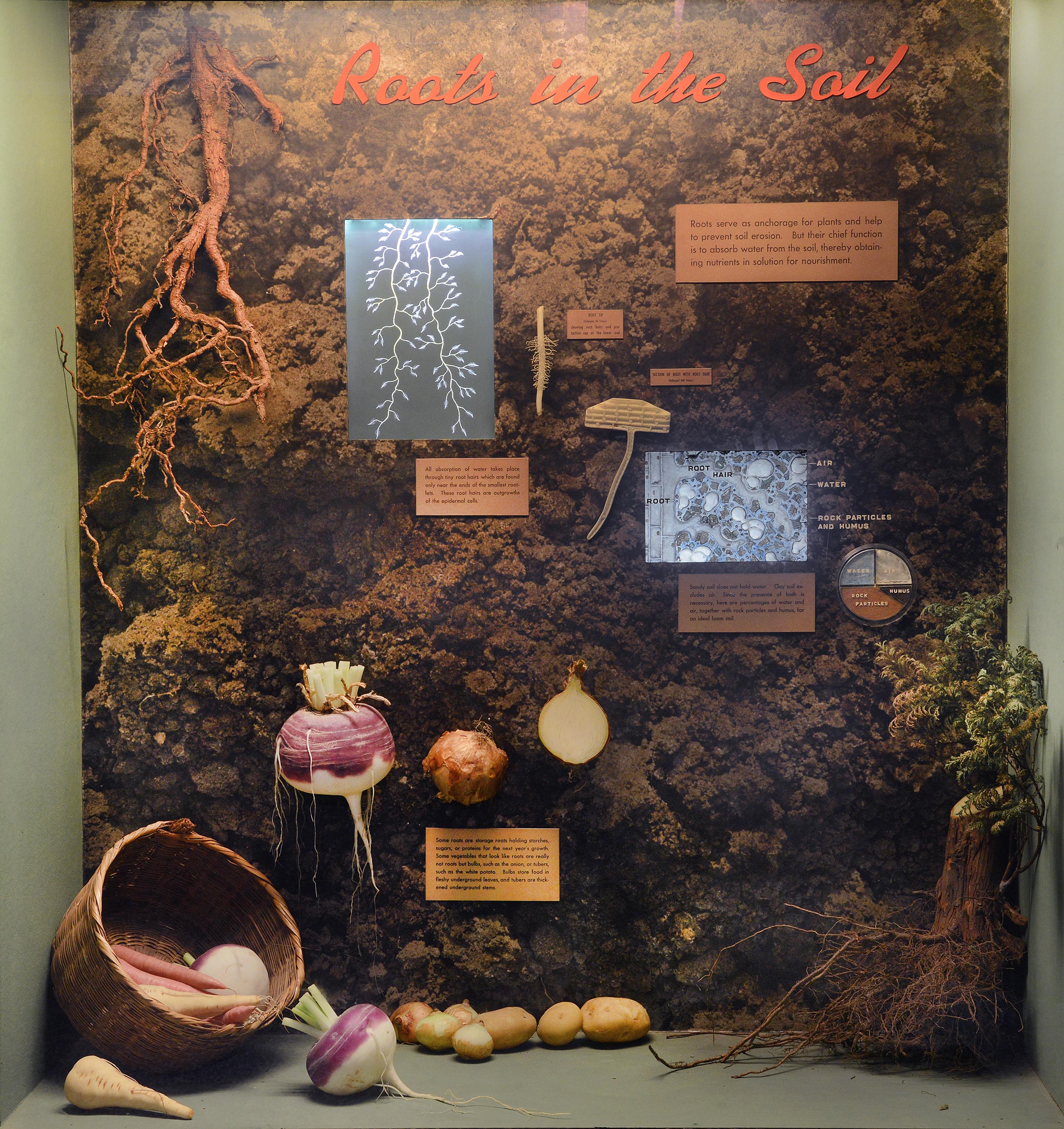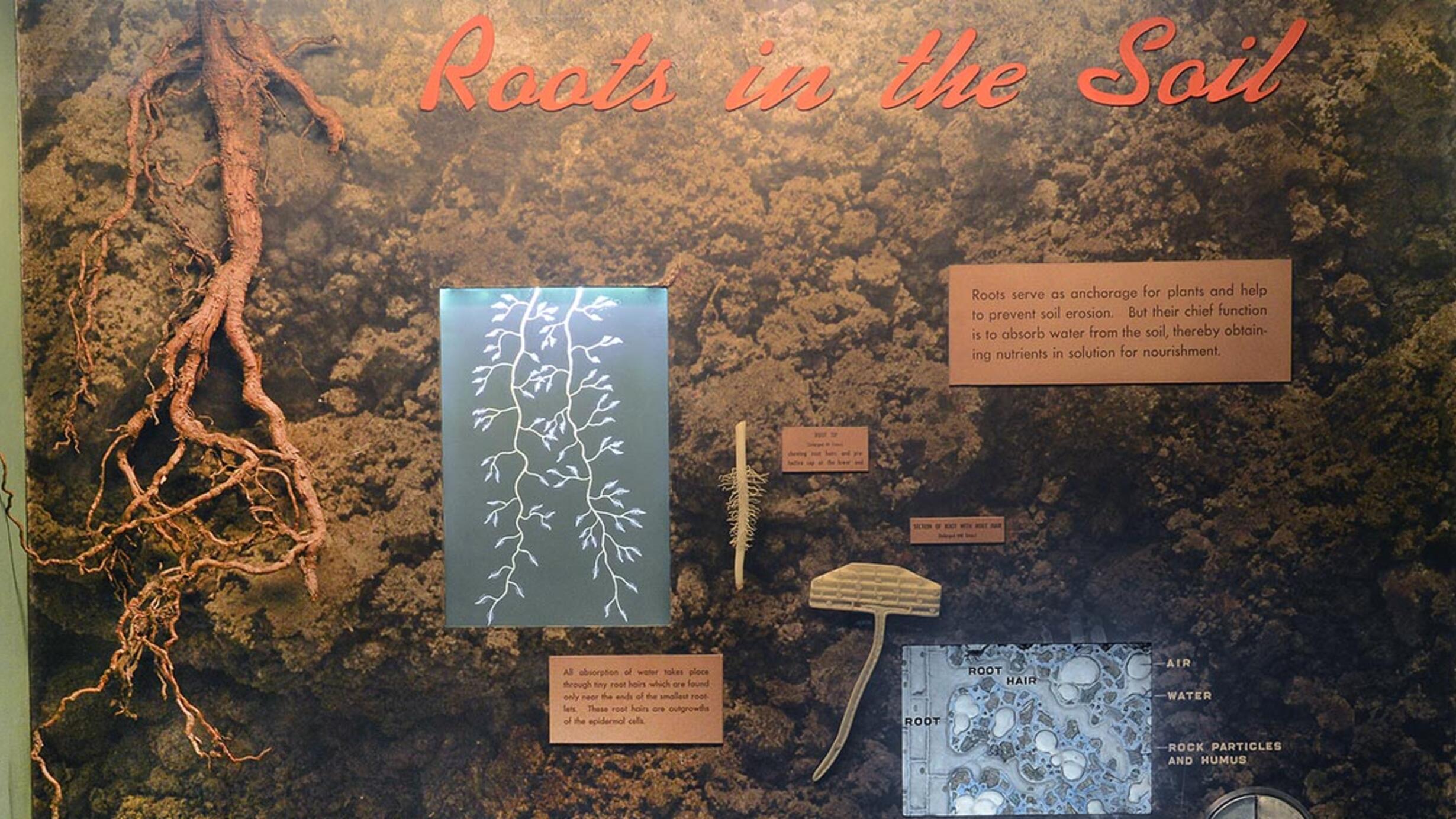Section of root with root hair
Sandy soil does not hold water. Clay soil excludes air. Since the presence of both is necessary, here are percentages of water and air, together with rock particles and humus, for an ideal loam soil.
(Disk shows proportions of water, air, humus, and rock particles in the soil.)
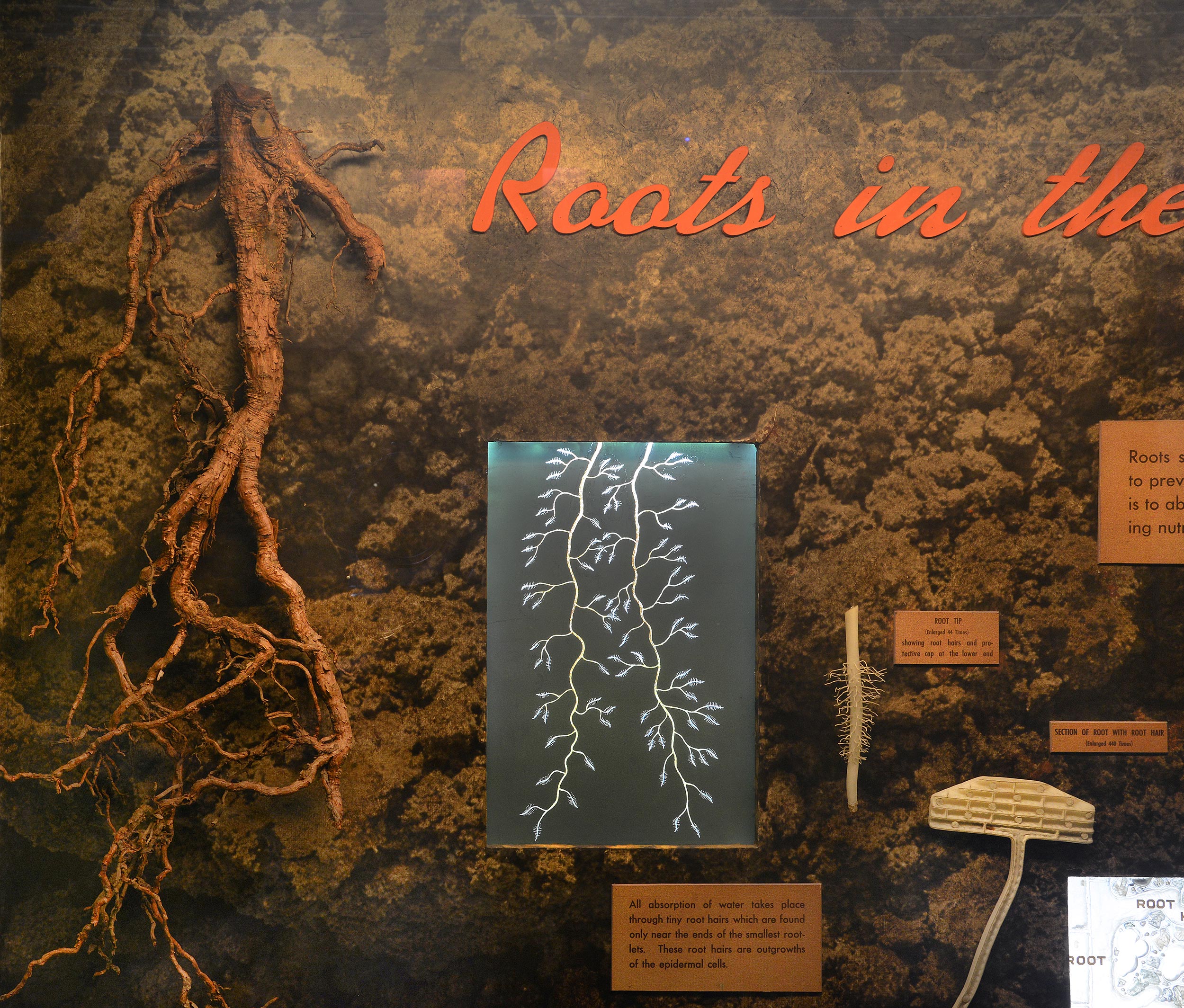
Root Tip
Enlarged 44 times showing root hairs and protective cap at the lower end.
All absorption of water takes place through tiny root hairs which are found only near the ends of the smallest rootlets. These root hairs are outgrowths of the epidermal cells.
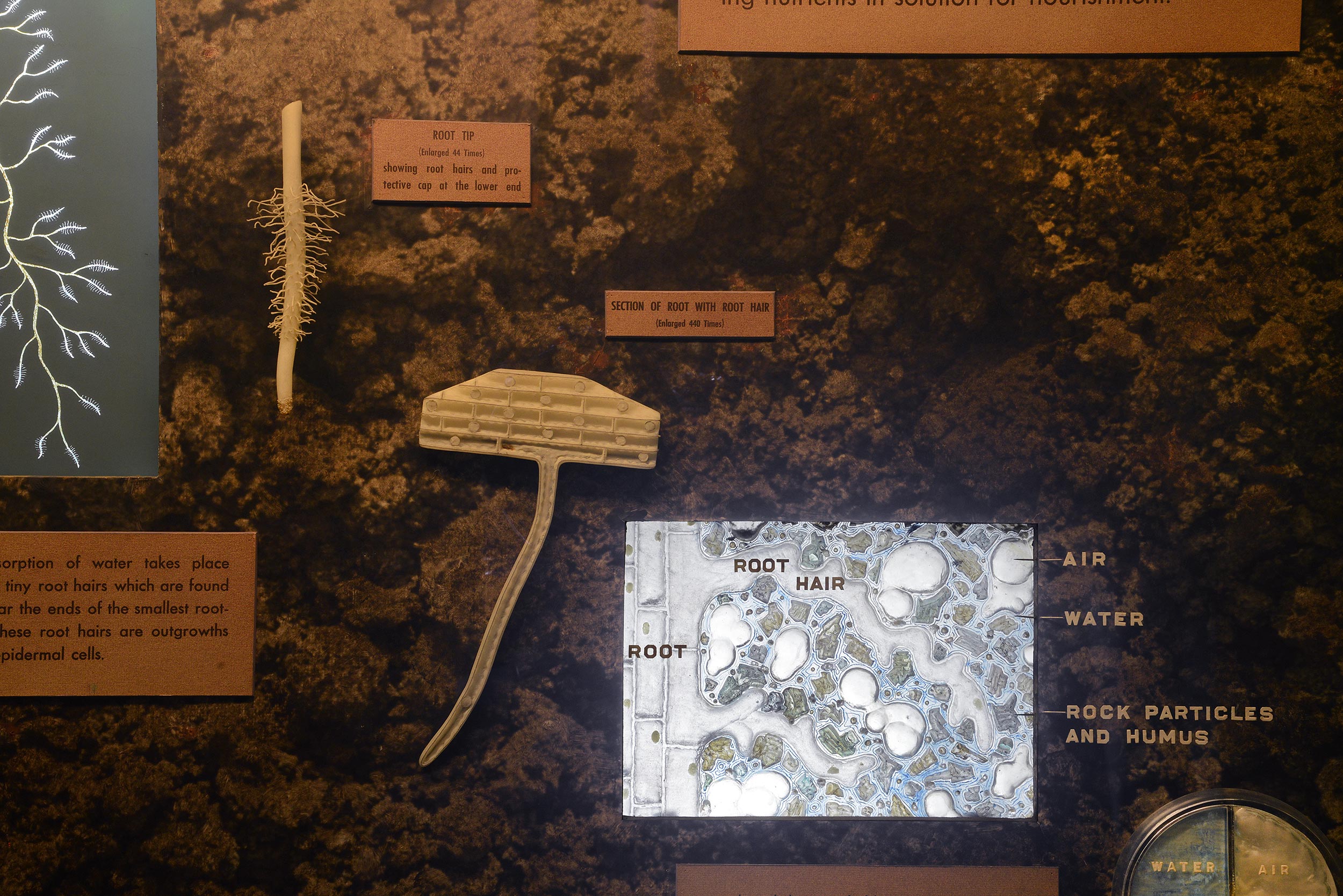
Roots in the soil. Roots, tubers and bulbs.
Roots, tubers, and bulbs
Some roots are storage roots holding starches, sugars, or proteins for the next year's growth. Some vegetables that look like roots are really not roots but bulbs, such as the onion, or tubers, such as the white potato. Bulbs store food in fleshy underground leaves, and tubers are thickened underground stems.
Carrots
Onions
White potatoes
Beets
Parsnips
Turnips
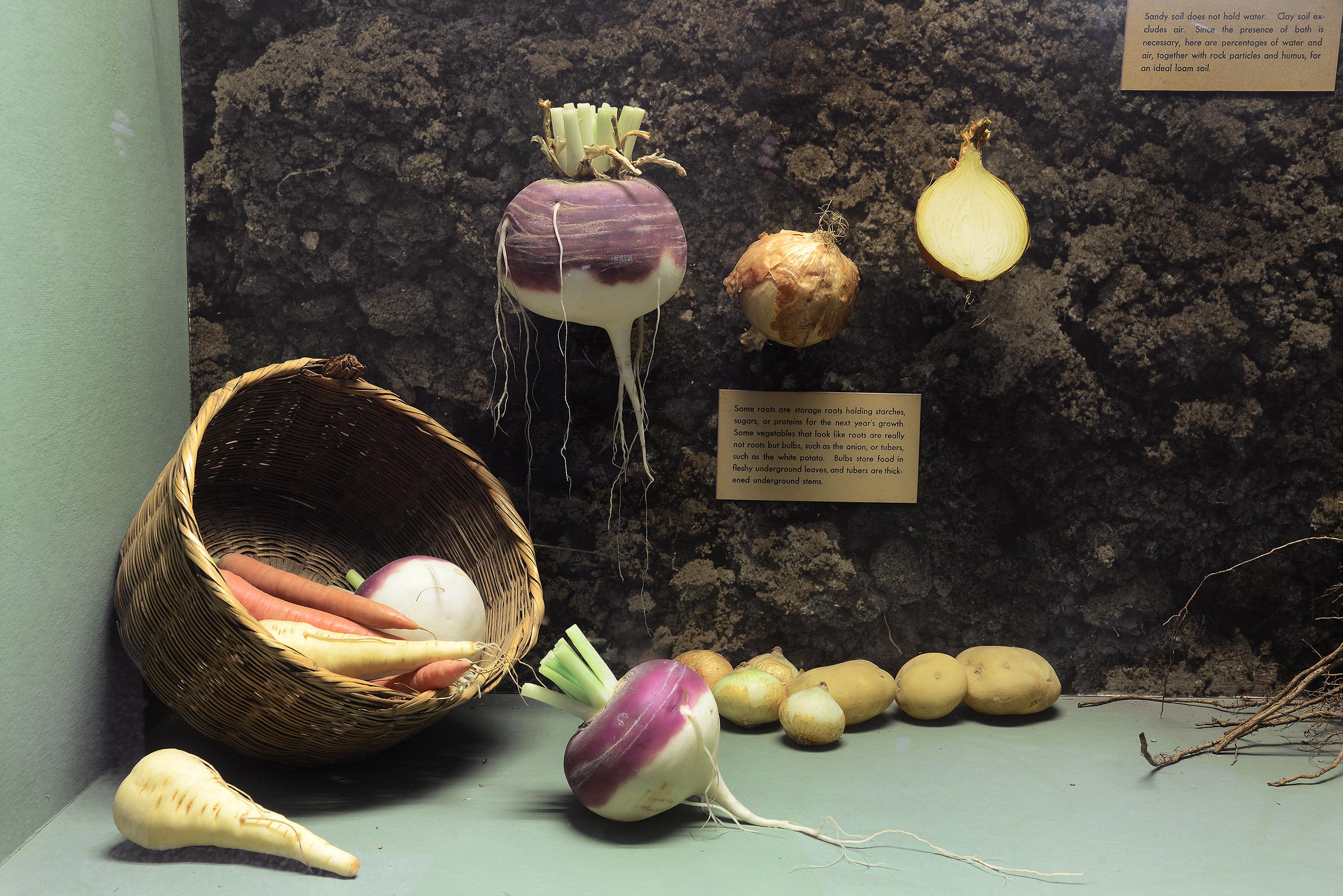
Roots in the Soil
Part of Hall of New York State Environment.
